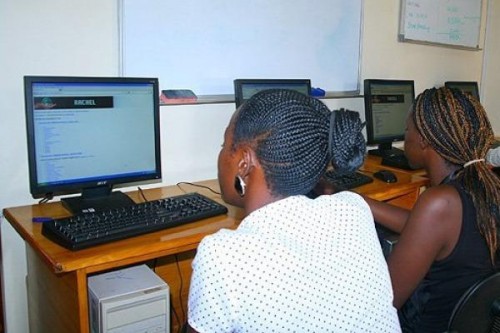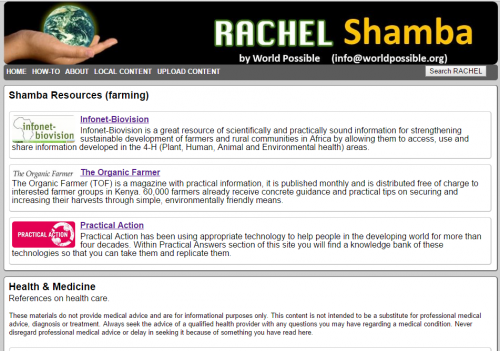|
Newly appointed Kobo CEO Michael Tamblyn took to Twitter today to post a rambling diatribe on why Amazon might not be the best call for indie authors to self-publish with. If you have a bone to pick with our favorite e-commerce whipping boy, you might take a depraved amount of glee from the complete notes below. 1) Indie authors take note: Amazon is, among other things, a machine designed to optimize product prices in order to gain share and sales. 2) Amazon, like every retailer that reaches a certain size, turns to its suppliers to grow profitability by demanding more favorable terms. 3) The Hachette-Amazon fight is an especially public manifestation of that Big Retail process. Nothing new there (Walmart, Target, B&N et al) 4) Some vocal traditionally published authors (but not all) support Hachette and criticize Amazon and… 5) Some vocal independent authors (but not all) support Amazon and criticize Hachette… 6) Defense of Amazon by indie authors makes sense on one level. For them, Amazon is the well-spring, where the self-pub revolution started. 7) But it seems like self-published authors believe they are protected somehow – that what is happening to Hachette won't happen to them. 8) Some indie authors even muse that the best possible strategy is exclusivity with Amazon, leaving readers on other platforms behind. 9) In the long run, I don't think that Amazon makes a big distinction between a publisher and an indy author – they are both suppliers. 10) Hachette and the rest of the big 5 sit at the top of a list of suppliers to be "improved” from Amazon's perspective. 11) Hachette is first because one negotiation with a big publisher makes a lot of bestselling books more profitable. That's efficient. 12) I don't think anyone believes that Amazon will stop with Hachette. With a successful conclusion, all pubs will go through the same thing. 13) They will move down the list. Midsized or smaller publishers come next. (Assuming this all isn’t being pursued quietly in parallel.) 14) From Amazon's perspective, how is an independent author any different than a publisher? Still a supplier, to be made more profitable. 15) The indie author's situation is most tenuous of all. If >80% of sales come from Amazon, *no leverage when it's your turn to be "optimized” 16) An indie author, like any publisher, can take her books away if in conflict with Amazon. But it hurts the author *way more than Amazon. 17) A reasonable author response to the Amazon threat wdb: “they won’t need to do that to us. Our prices are already where they need to be.” 18) (Indy authors on Amazon are penalized if their books are too expensive, so that's largely true.) 19) But that assumes that the Amazon battle is about price. It's not. It's about profit. And _any_ supplier can be made more profitable. 20) If indie authors are 20% of Amazon’s total sales, then it's hard to imagine that indie authors aren’t on that list to be improved. 21) But if the Amazon battle extends to indie authors, authors will have less leverage. Especially if they are exclusive. 22) The mechanisms for the Amazon squeeze are in place, agreements allow it. Self-pub inclusion in Select, Unlimited, KOLL are early examples. 23) Selling other publishers and authors, Amazon can survive without Hachette, but uncomfortably and less profitably. 24) With a diverse base of retailers, Hachette can survive without Amazon, also uncomfortably and less profitably. 25) Both parties having other options is why this dispute wasn’t over in a week or a month. 26) The litmus test for an indie author: could your income survive a conflict with Amazon? If not, it's worth thinking about how you could. 27) To paraphrase: “First they came for the big New York publishers, but I wasn’t published by a big New York Publisher…” 28) Then they came for the mid-sized publishers, but I wasn’t published by a mid-sized publisher… 29) Then they came for the academic presses… 30) Then they came for the literary presses… 31) Then they came for me. Kobo CEO Lambastes Amazon is a post from: Good e-Reader |
A Semi-automated Technology Roundup Provided by Linebaugh Public Library IT Staff | techblog.linebaugh.org
Friday, October 17, 2014
Kobo CEO Lambastes Amazon
WattPad Sensation Anna Todd Gets Movie Deal from Paramount
|
After by Anna Todd has had over one billion reads on WattPad, this has attracted attention from Paramount Pictures and they decided to make a film out of it. Adam Shankman and Jennifer Gibgot will produce through their Offspring Entertainment banner. Their credits include the Step Up series to 17 Again, Bedtime Stories, Hairspray, Rock Of Ages and The Last Song. This will be the first time a serialized book from WattPad will be made into a feature film. Confirming the news on her Instagram page, After author Anna Todd wrote: "In case you haven’t heard… Paramount acquired the rights to After!!! I am so happy and so excited to finally tell you!… Never give up on your dreams because mine came true and so can yours!! After has been billed as the ‘new Twilight’ and ’50 Shades of Grey without the S&M’. The book is basically fan-fiction of One Direction singer Harry Styles. “Tessa Young is an 18 year old college student with a simple life, excellent grades, and a sweet boyfriend. She always has things planned out ahead of time, until she meets a rude boy named Harry, with too many tattoos and piercings who shatters her plans.” WattPad Sensation Anna Todd Gets Movie Deal from Paramount is a post from: Good e-Reader |
URL: http://goodereader.com/blog/e-book-news/wattpad-sensation-anna-todd-gets-movie-deal-from-paramount
LG Starting to Gain in Battle for Android Market Share
|
According to the latest statistics released by Chitika, the LG user base has exhibited the greatest usage share growth as compared to any of the competing Android brands since June 2014. With a 1.7 percentage point gain and representing over 10% of the total North American smartphone and tablet Web traffic, LG should be counted as a significant player in the mobile market. Samsung can rest easy for now, sitting comfortably at the top of the heap with 57.4% of the current Android market share –but it would be wise to keep at least one eye on their competition given their less substantial 1% gain since June 2014 (despite the release of an entirely updated line of mobile hardware during this period). Amazon is sitting precariously in the third spot (with a meagre .5% lead on Motorola), likely due in large part to their Fire tablets as opposed to their unremarkable smartphone sales. Google was down this quarter, falling to just 3.6% –but these numbers should look a little better shortly with the release of the Nexus 6 and Nexus 9 devices. Chitika’s report also indicated that smartphones continue to dominate the mobile Web traffic, with very little growth in this area being observed in the Android tablet space. Some speculation suggests that this is due to Apple’s dominance in the tablet arena, but it may also be due in part to the next-generation phablet type smartphones prompting users to invest in large-screen, smartphones instead of a tablet. Founded in 2003, Chitika is an online ad network that boasts the delivery of “over four billion strategically targeted ads each month to a network of over 300,000+ sites.” Together with high profile advertising partners like Yahoo!, Chitika has developed proprietary optimization technology that promises to display the right ad, at the right time.
LG Starting to Gain in Battle for Android Market Share is a post from: Good e-Reader |
Check out our new Recommended List page!
| Are you looking to add some new content to your Digital Collection? Do you need some ideas for fresh content? We’ve got you covered. Check out our new Recommended List page on the Partner Portal! This collection of lists is curated by OverDrive's Collection Development librarians and is your source for building the best collection for your community. We scour Marketplace to find the newest, most popular, highest circulating, and interesting content that is continually updated, so check back often. We’d love your feedback on the lists and new page. Please send your ideas and questions to collectionteam@overdrive.com.
*Some titles in lists may have limited regional or platform availability. Rachel Kray is a Collection Development Analyst at OverDrive. |
URL: http://feedproxy.google.com/~r/DigitalDistributionBlogOverdrive/~3/k99mPeP_9Y4/
Apple Creates Carrier-Independent SIM Card
|
After the anti-climactic Apple event yesterday, the tech community at large took a nap –which is why news seemed to slip between the cracks telling us Apple has built a SIM card that allows users to move between AT&T, Sprint, and T-Mobile (plus EE in the UK) without having to swap it out. Using the new Apple SIM card, you can switch between carriers in the Settings for your iPad Air 2 by simply selecting a new one from the list, and voila! While it may not seem like a big deal to swap out a SIM card, it does involve a little hassle (getting them in and out of an iPad or iPhone involves a tool, unlike the spring loaded insert and eject usually seen with SD cards). They generally come at a cost as well, so you end up shelling out a little money with each carrier you use. With that said, the people who are excited by this news are those who tend toward short-term data plans –which typically points to travelers. It doesn’t appear like you can purchase this new Apple SIM card separately right now, but it is standard issue on their new cell-enabled iPad Air 2 tablets… but many of us have our fingers crossed that this will be an option very soon!
Apple Creates Carrier-Independent SIM Card is a post from: Good e-Reader |
URL: http://goodereader.com/blog/spotlight-on-android/apple-creates-carrier-independent-sim-card
RACHEL-Pi – delivering education worldwide
| Liz: If you’re a regular reader, you’ll have noticed more and more frequent mentions over the last year of a piece of kit called RACHEL-Pi. RACHEL is an offline server, run on a Raspberry Pi, full of educational content from teaching curriculums, Khan Academy materials, Wikipedia, classic literature, reference material and textbooks; alongside vital community materials like medical and first aid textbooks. We’re very proud to be able to support World Possible’s RACHEL-Pi project through our education fund. It’s being used all over the world in remote places where the internet is unavailable – and this year it’s gone from strength to strength. Here’s Jeremy Schwartz, the Executive Director of World Possible, to show you what they’ve been doing with the project in the last year. What an incredible 12 months it has been. World Possible has seen RACHEL-Pi (our Raspberry Pi-based educational server) deployed in scores of countries – often in the most remote of locations – delivering a world of educational content to tens of thousands of students previously far removed from the great online learning tools those of us reading this blog take for granted almost every day.     How'd we get here? It's worth taking a few seconds to get some history on World Possible's RACHEL server. In 2009, World Possible (an all-volunteer team, mostly from Cisco) curated a package of creative commons resources (Wikipedia, Khan Academy, CK12 textbooks, and much more) for offline distribution. Coupling the content with open-source web server software, we could create "Remote Area Community Hotspots for Education and Learning," ("R.A.C.H.E.L.") – a locally cached web server accessed through any connected web browser (with no need for internet connectivity). 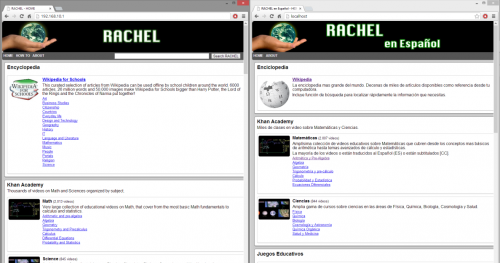 RACHEL is accessed via a web browser Probably more naïve than anything, an attempted round of pilot projects of RACHEL (which at the time was a power-hungry NAS device) in 2009, in Sierra Leone, failed in pretty dramatic fashion.   The failure took a real toll on World Possible and forced us to rethink RACHEL distribution, ultimately building a distribution network of partnerships with on-the-ground teams that could do the hard part for us, and many of which still lead the RACHEL distribution charge today: 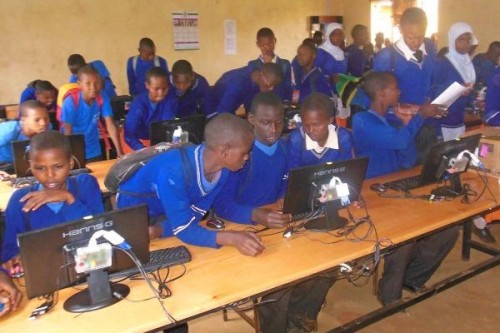 Powering Potential in Tanzania – watch RACHEL being taught; read more 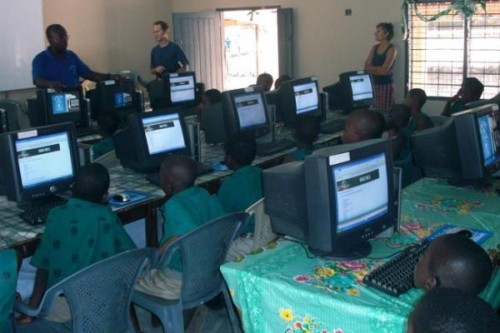 EVCOAfrica in West Africa – watch Seth introduce RACHEL Despite the early successes of those groups, we still didn't have the final piece of the puzzle that has exploded RACHEL deployment today (development of open-source educational resources + uniform standards of web browsers + proliferation of low cost computing hardware and storage). In comes the Raspberry Pi, giving us the ability to create a plug-and-play webserver and hotspot at a price point that we can distribute to masses of people without any required computer literacy background. Is it working? – "Content is king; distribution is King Kong" Almost exactly a year ago, a partnership with the Gates-Backed Riecken Libraries in Guatemala and Honduras, as well as a funding leap of faith by a few loved donors and the Rotary Club of Portola/Woodside Valley (CA), allowed us to launch a new phase of World Possible and RACHEL-Pi focused on creating, curating, and distributing relevant content from and within disconnected communities. A good old fashioned sneaker-net, delivering locally relevant (and often locally created) digital educational content to disconnected schools, libraries, orphanages and community centers. 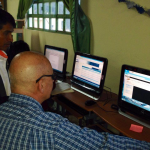  The World Possible team in Guatemala is now led by Israel Quic, a native Mayan, initially attracted to RACHEL-Pi as a means of preserving and teaching his Mayan heritage and language to local communities.
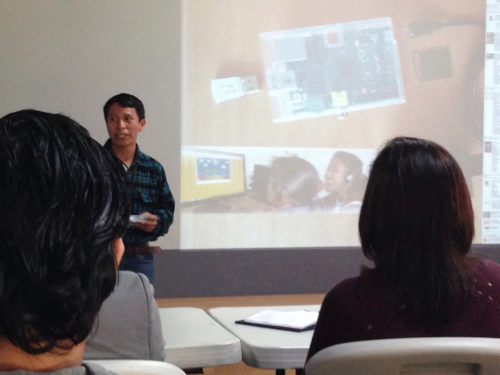 Israel Quic presents RACHEL at Campus Tec, the technology department of University de la Valle Israel quickly saw an opportunity to collect more locally relevant agricultural and political resources than we currently distribute as part of our Spanish-language RACHEL-Pi. In April, the fruits of his labor truly began to sprout, when word came from one agricultural community, an early RACHEL-Pi recipient, which built a drip irrigation system out of old plastic bottles after discovering how to do it from a single teacher's smartphone while researching our Guatemalan content on their RACHEL-Pi.  A drip irrigation system made from old plastic bottles, using how-to content from RACHEL-Pi The successes only caused us to redouble our efforts. Aided by our local Facebook page, World Possible Guatemala solicits offers of help and requests for RACHEL from across the country. Current RACHEL-Pi installations in Guatemala Installations of RACHEL-Pi in community centers and libraries are often made available 24/7, enabling anyone with a smart phone to come learn, research, and explore. 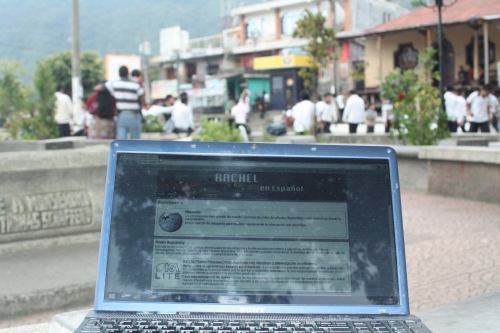 San Lucas Toliman RACHEL-Pi wifi access point 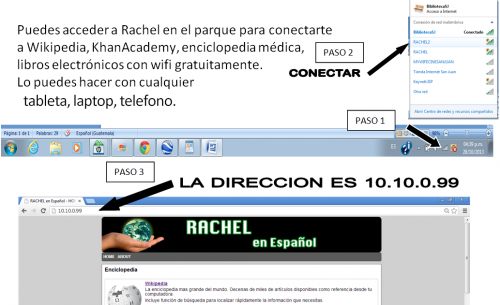 Facebook post of Biblioteca Comunitaria Rija'tzuul Na'ooj San Juan del Obispo in Sacatapequéz is an agricultural community where middle school kids are using RACHEL to learn not only how to grow and irrigate, but also how to cultivate mushrooms and make fresh peach jam. Along the way they get business skills as well. 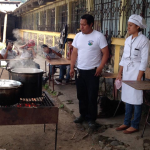  The mission in Guatemala is still just beginning, but the lessons learned and successes are providing a key roadmap for World Possible. Make available valuable educational resources, supplement them with locally relevant vocational and cultural content, get buy-in from local community volunteers, and distribute… distribute… distribute. The results are truly inspirational. What's next? – "Tell me and I forget, teach me and I may remember, involve me and I learn." Globally, the RACHEL effort is still driven by the hundreds of groups that download RACHEL and distribute independently in their own communities. Everything we do is free to download through our website, FTP site, BitTorrent sync, or even shared Dropbox. The Raspberry Pi has also made it so anyone can do this on their own, a powerful democratization of access to a world-class education.   World Possible will continue to support these groups through our own volunteer network, through independent advice, and by creating the best package of content available. Even more today, a biweekly newsletter is connecting thousands of RACHEL advocates in nearly 40 countries who have been through the process and can provide best practices to new users locally. 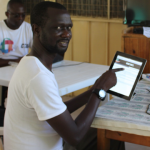 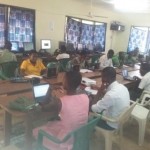 What excites us most is our ability to replicate the successes that have been achieved in Guatemala. In Micronesia, Professor Hosman and her students curated a RACHEL for the state of Chuuk. She's now working with Inveneo to deploy RACHEL to the entire region's network of schools. 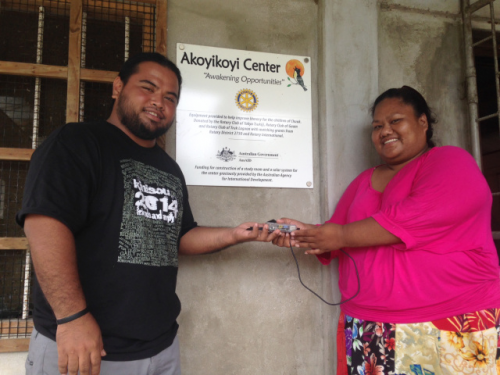 Grace, a teacher at Akoyikoyi School in Chuuk, receives a RACHEL-Pi In Kenya and East Africa, thanks to a generous grant from this very Raspberry Pi Foundation, we've just completed a hire (Bonface Masaviru) to follow the roadmap that Israel Quic laid out in Guatemala. Bonface is spreading RACHEL throughout Kenyan schools… 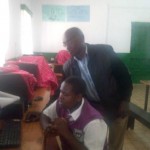 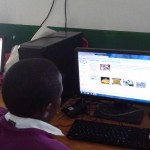 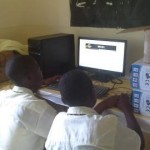  … and working with local volunteers such as Zack Matere to help us curate RACHEL Shamba (an offline package of farming resources):
Where we can, we'll look to our long-time distribution partners to help create full labs to access RACHEL-Pi. Here in Uganda, Romeo Rodriguez gives his "children" their first ever look at technology in a new library thanks to a full "digital library-in-a-box" from World Possible.  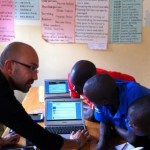 We'll continue to find ways to hire additional country managers, local to their communities, who have proven their dedication to RACHEL, to involve indigenous people in creating and distributing the content they currently lack. If you'd like to be part of the mission, we'd love to have you. A great group of development volunteers can be reached at rachelproject@googlegroups.com. If you have networking expertise, we can pair you with a group that might need your help deploying RACHEL – info@worldpossible.org. If you want to join the Raspberry Pi Foundation in supporting our efforts financially, we'd love it – donate here. If you want us to come talk to your group, or help deploy RACHEL, we'd love that also – please don't hesitate to get involved! Thank you to all of the individuals and groups who already have; there is so much more we can do together. |
URL: http://www.raspberrypi.org/rachel-pi-delivering-education-worldwide/
Bookeen Announces Cybook Muse Essential and FrontLight
|
Bookeen has announced two new e-readers today, the Cybook Muse Essential and FrontLight. These devices feature a capacitive touchscreen display and their screens are completely flush with the bezel, much akin to the Kobo Aura. The Cybook Muse has a 6 inch screen allowing for easy reading in all conditions, while reducing the size of the e-reader by 17% in comparison to its predecessor, the Cybook Odyssey. The resolution is 1024 x 758, and has 213 DPI. Underneath the hood is a 800 MHZ Freescale processor and 4 GB of internal storage. It does have support for an MicroSD card, so you can simply insert one in to store thousands of additional titles. Speaking of eBooks, there is a built in store loaded on the two e-readers, the press release said there is over 100,000 titles. I know with the Cybook Ocean, it did have an option in the settings menu, to allow users to connect up to any eBook store they want, as long as the titles are being sold in PDF or EPUB. The one facet that Bookeen is really getting behind is eliminating most buttons on e-readers. They decided to go with a simple home button and physical page turn keys on the left and right hand side. If you don’t dig the tectonic feel of these keys, you can simply utilize the touchscreen. Bookeen is borrowing a page out of Amazons playbook by bundling the font Caecilia. This is the same font that is the default on the new Kindle Basic Touch and Kindle Voyage. The thing I like about this font, is combined with the resolution it is sure to allow the text pop from the screen and take advantage of the higher DPI. These e-readers will be available to pre-order on November 5th on the main Bookeen website and will start shipping on the 14th. The Cybook Muse Essential should cost 79€ or $99 USD and the Cybook Muse FrontLight should cost 99€ or $129 USD.
Bookeen Announces Cybook Muse Essential and FrontLight is a post from: Good e-Reader |
Cybook Ocean Finally Gets a Release Date
|
Bookeen has been teasing the e-reader world with the eight inch Cybook Ocean since 2013. The company has had huge problems with getting this one to market, and I often thought that this model is cursed. Fear not, the Cybook Ocean will be available to order at the end of the month and will start shipping out November 14th 2014. The Cybook Ocean features an 8 inch screen and has a resolution of 1024×758. This model adheres to the current trend of packing a front-lit display on the e-reader and I was told that it is on par with the Kindle Paperwhite 2, in terms of overall screen clarity. Additionally, this is the first eight inch e-reader in the world that has their screen flush with the bezel. Underneath the hood lurks a 800 MHZ processor, 512 MB of RAM and 4 GB of internal memory. If this is not enough to store the books you have purchased from the on-board bookstore, you can simply insert an SD Card.
Tactile purists will enjoy the physical page turn buttons on the bottom of the device. It can also be interacted with solely via the touchscreen if that is your thing. The Cybook Ocean was originally announced in October 2013 and was slatted to be available that holiday season. Various setbacks plagued the French company and it looks like it is finally going to be available in November and the cost will be 1790€ or $229 USD.
Cybook Ocean Finally Gets a Release Date is a post from: Good e-Reader |
URL: http://goodereader.com/blog/e-reader/cybook-ocean-finally-gets-a-release-date
Amazon Kindle Basic Touch vs Kindle Paperwhite 2
|
Whenever Amazon releases new products, inevitably the question arises, should I upgrade? The New Kindle Basic only costs a paltry $79 and is the first model of this class to incorporate a touchscreen. How does the Basic compare to the Paperwhite 2? Today, we dive deep into the eBook, PDF and hardware experience. What was most surprising about our head to head comparison was the new Kindle Basic 2014 edition actually had a better screen than the Paperwhite 2. We saw the Kindle Paperwhite had a beige tinge to the background when reading a book, while the Basic had almost a pure white display. This made text really pop, and serious readers would notice a difference putting them side by side. The Basic ships with the exact same firmware as the Paperwhite 2, so you get GoodReads right on the navigation bar. This allows you to tap into the extensive eBook discovery and social community aspect and form online bookclubs.
Amazon Kindle Basic Touch vs Kindle Paperwhite 2 is a post from: Good e-Reader |
URL: http://goodereader.com/blog/electronic-readers/amazon-kindle-basic-touch-vs-kindle-paperwhite-2





